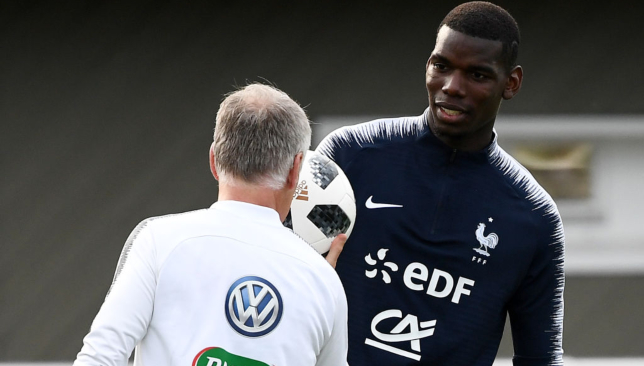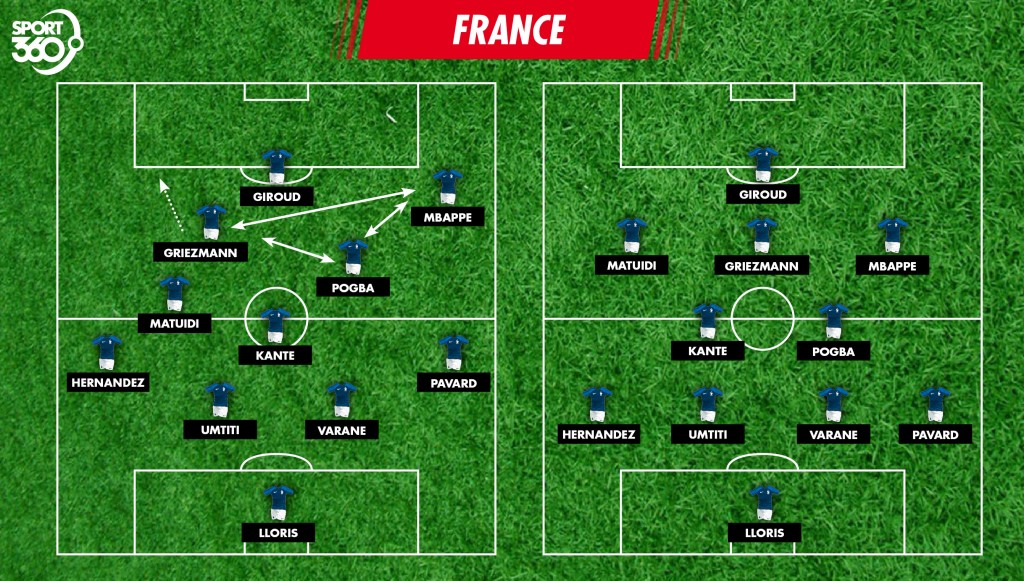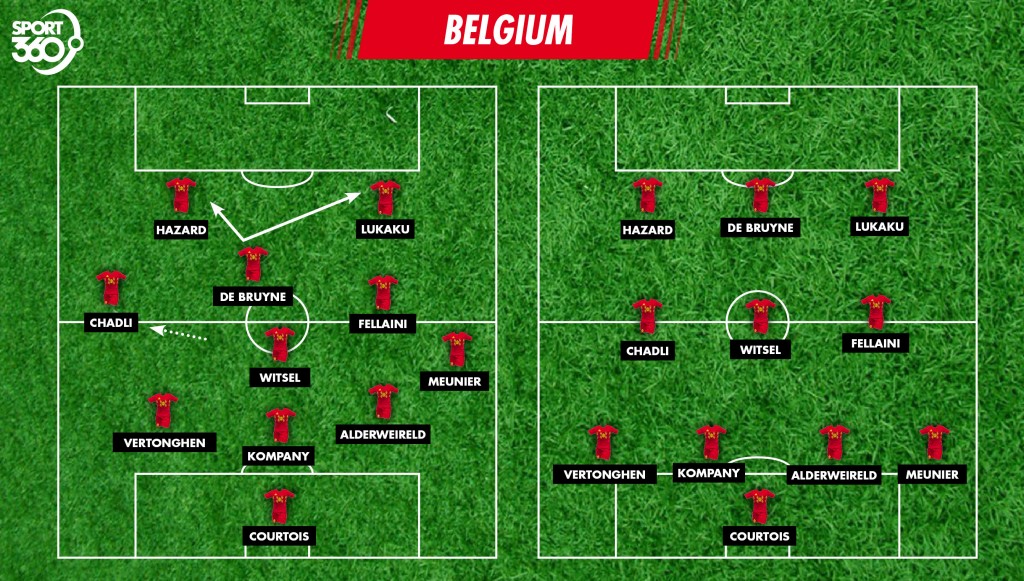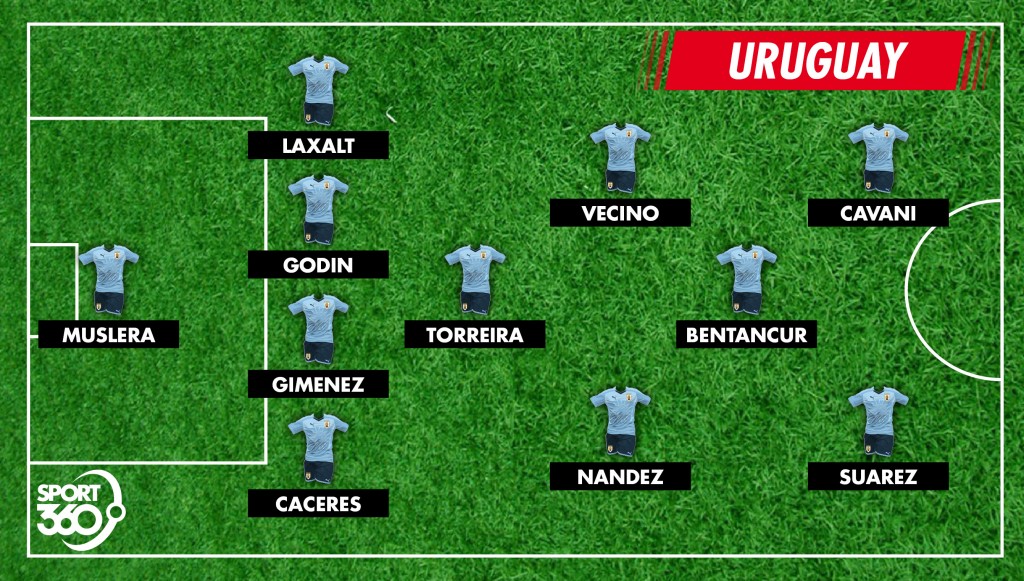
A wonderfully unpredictable World Cup reached its climax with France beating Croatia 4-2 in an entertaining finale at the Luzhniki Stadium.
The tactical advancements across the board were truly fascinating in this edition as managers looked to extract the best from their sides.
Here’s a look at some of the most innovative and effective strategies that featured prominently in Russia.
FRANCE’S LOPSIDED SHAPE
Given the wealth of talent among their ranks, France’s World Cup triumph is one of the less surprising outcomes from a tournament that pitched so many curveballs. However, Didier Deschamps was focused on efficiency rather than blowing teams away.
While he was criticised for his cautious approach, his tactics were spot on and France’s lopsided 4-2-3-1 system was key to that. The use of a central midfielder – usually Blaise Matuidi – on the left of a three behind the striker was an innovative ploy and especially effective since it unlocked Paul Pogba.
Deschamps used the Manchester United midfielder on the right side of central midfield where his vision, flair and quick passing was complemented by the trickery and pace of Kylian Mbappe.
The formation allowed Matuidi to tuck inside and form a three-man central midfield. This made them difficult to break down through the middle but also set them up well in the transition. Pogba was quick to free himself up and carry the ball forward or make raking passes in behind for Mbappe.
Olivier Giroud meanwhile would show for the ball, offering the option to hold possession or exchange a one-two while Antoine Griezmann pulls wide to the left or comes short to support Pogba. The defence would be pulled in different directions and France often conjured clear-cut opportunities from those scenarios.

ENGLAND’S SET-PIECES
Going into this World Cup, Matthew Upson’s goal against Germany in 2010 was the last time England had scored from a set-piece at a major tournament. While at Euro 2012, the 2014 World Cup and Euro 2016, England had taken 72 corners without a goal.
Their run to a fourth-place finish in Russia though was largely owed to their conversion rate from dead-ball situations.
Gareth Southgate is a known admirer of NBA and NFL drills and chose to incorporate those movements in his set-pieces with forward coach Allan Russell leading the practice sessions.
England’s ‘Love Train’ was a consistent ploy from corners used to confuse defenders.
Four players lined up in a row from the corner, stopping opposition markers from getting close, before they would break off in separate directions.
Usually two players would dart to the front post, one peel off to the back, freeing up space in the middle for an unmarked header. One or two players meanwhile would focus on screening opposition defenders to the England targets could break free.
BELGIUM’S FORMATION SWITCH
Roberto Martinez’s systematic dismantling of Brazil in the quarter-finals will go down as this World Cup’s finest piece of tactical mastery. It left pundits trying to decipher the formation he used. Was it a 3-4-3, 4-3-3, 4-3-2-1 or something entirely different?
The general bewilderment is testament to the fluidity of his team. In its simplest form though, it was both a 4-3-3 and a 3-4-3 with the Belgians switching seamlessly between both formations.
They defended with a back four, denying Brazil’s dangerous wingers freedom of space, but with possession, they shifted to a three-man defence with Jan Vertonghen holding back while Nacer Chadli shuttled out from central midfield to the left flank.
Not only did this allow the West Brom player to use his pace out wide, but ensured Kevin De Bruyne had enough space through the middle in his false nine role. Meanwhile, Romelu Lukaku was deployed on the right of a front three to take advantage of Marcelo’s tendency to go forward. It worked like a charm.

Belgium’s seamless transition between 4-3-3 and 3-4-3
URUGUAY’S DIAMOND
Uruguay were among the best defensive sides at this World Cup. Key to that was an experienced goalkeeper in Fernando Muslera and the solid centre-back pairing of Atletico Madrid duo Diego Godin and Jose Gimenez.
New Arsenal signing Lucas Torreira proved crucial to their structure with Oscar Tabarez opting for a 4-1-2-1-2 formation, utilising a midfield diamond. The defensive midfielder screened in front of the centre-backs without the ball while pushing up into midfield with it.
The experience and tactical understanding of accomplished strikers Luis Suarez and Edinson Cavani came into play as well as they defended from the front with one pressing the man on the ball while the other supported Rodrigo Bentancur at the tip of the diamond, working to cover passing lanes.
With Torreira in behind, Uruguay were compact, forcing teams wide. Their work ethic though saw them shuttle out to the flanks in packs of three to box in a wide player in possession and if they did win the ball, one of the strikers were usually well positioned in space for the counter.

RUSSIA’S DIRECT ROUTE
Little was expected from a faltering Russian side ahead of the tournament but Stanislav Cherchesov’s switch from a 3-5-2 to a 4-2-3-1 made a world of difference. The full-backs and wingers both provided the width in the system while the double pivot is what made this structure work.
Yuri Gazinsky would drop off and support the two centre-backs when the full-backs pushed up. Aleksandr Golovin linked midfield and attack superbly while man mountain Artem Dzyuba was key to Russia’s route forward.
His aerial supremacy saw the striker often lay the ball off for Golovin or bring the wingers into play with flicked headers and knockdowns.
Russia’s aim was to get the ball to Dzyuba as quickly as possible and play from there. No one won more headers (41) than him at the World Cup while only Harry Maguire matched him having played two games more.